Download Now!
Brief history
Location description
Project description
Project development process
Key message
References
The first railway was built in Lebanon while it was part of the Ottoman Empire. The French-established Société des Chemins de fer Ottomans économiques de Beyrouth- Damas-Hauran which was granted a concession in 1891 [1]. In the Beginning of August 1895 the first train took off from the port of Beirut to Rayak railway station. In Rayak, officials from all over Europe and the region where waiting for the train to arrive in order to celebrate what it was as the beginning of the Middle Eastern rail history [3.1]. In 1912 this railway got connected with the rest of the Arab world, Europe, and Africa [2]. It served as a basic mean of transportation at that time. The railway became a part of the Intercontinental rail circle transported people and goods, even transported famous rulers and their armed forces.
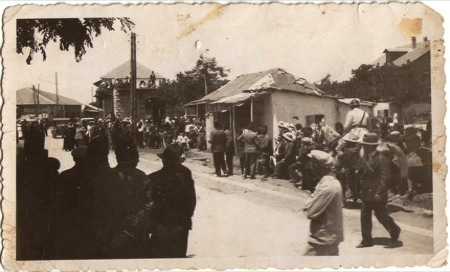
The arrival of King Faisal of Iraq to the Rayak Railway Station [12]
Other than having a big station, Rayak was famous for having one of the biggest train factories at that time. It was well known for designing and reassembling old steam engines that worked on charcoal to work on fuel [3.2]. In World War II this factory was used as a military base in which military weapons were fixed. At that time a group of engineers from both the train factory and Rayak's Military Airbase where assigned to build airplanes for the French military. Some of the airplane parts were manufactured and designed in Rayak's train factory. They were then taken to Rayak airport to be assembled to their new chassis, and, Rayak's first airplanes concurred the sky [3.3]. In 1976 the railway was shut due to the civil war [1], ending more than eighty-five years of success and achievements. Thirty-three years have passed and this institution which is more than one hundred and fifteen years old has been silenced, and left to perish through time.
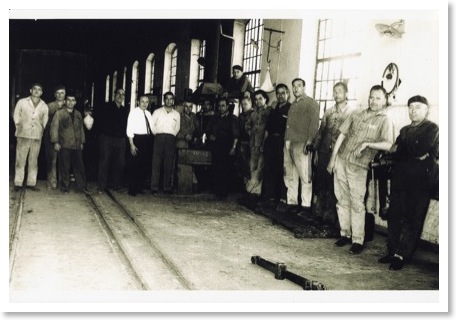
Workers inside the train factory of Rayak [8]
The city of Rayak is found in the middle of the Bekaa Valley, between two of the major touristic cities of Lebanon, Zahle and Baalbek. This city was once well known for its military airport, agricultural laboratories, cinemas, restaurants, schools, and international military bases. What brought all that fame and success to the city was Rayak`s Railway. Rayak Railway is divided into two parts, the train station and the Factory. The train station: It is approximately 35,395 m2, and consists of 9 buildings. A big hotel (The Buffet Hotel), the stations main building, an office building, ticketing and communication center, a military center, a postal station, the employee lounge, and the Security and keying office Building [4]. In the Eastern side of the station there are two rails, the Straight-Rail and the Curved Rail. The Straight-Rail which connects the station to Beirut and to a British military Base in Terbul was stopped in the nineteen forties. Whereas the Curved Rail connects the station to the factory from there to the city of Homs and to the new Beirut Rail.
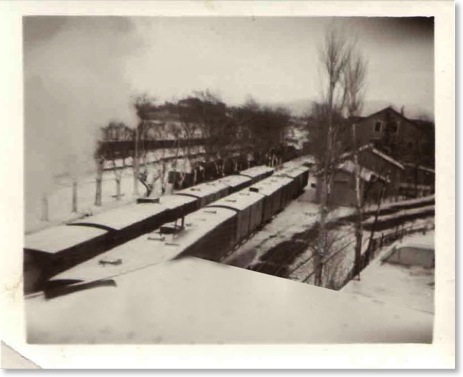
Rayak Railway Station in the year 1900
[12]
On the Western side of the station there is the rail that connects the station to Damascus. All three rails are sectioned into seven rails and connected to each other. In the Northern side of the station five of the sections are located, three of which were used for passengers and two for the trans- aboardment of goods. The two others sections are located in the southern side of the station and they were used to redirect locomotives. The factory: Is approximately 133,430 m2 and consists of forty-eight buildings which were divided into two basic units. The storage area, and the factory [5].The storage area consists of twenty-three buildings in which one functioned as a station where imported spare parts were unloaded, seven hangars where the spare parts and raw materials were stored, another as an equipment room, there were three office buildings, nine storage cabins, a storage keepers lounge, And a guards cabin.
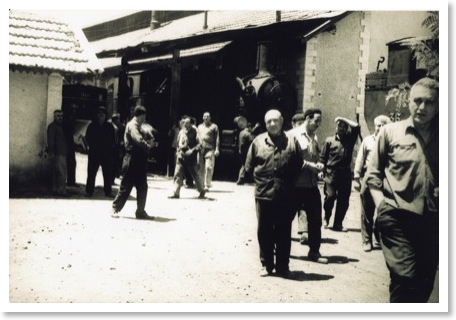
Workers
Leaving Rayak Rail Factory
[9]
The factory area consists of twenty-five buildings. One of the buildings is the huge factory divided into several segments. These segments were for the melt down of different metals, a section for tool reparation, the mechanical machinery division, the main circuit engine room, a plumbers work shop, the tracing office, an air compressing room, the painting center, the brake reparations section, three foundry segments, and three assembling segments. The other buildings were named according to their profession: the carpentry, the steam and pressure clock reparation room, the engineer`s offices, medical clinic, electric plant, locomotive garage, restaurant, the Dormitories, transformation center, traction center, hangar, store head office, employers train station, keying center, turning blade, ticketing office, two security towers, and 4 security cabins, stoke fuel center, and alimentation center.The Northern side of the factory a rail passing underneath the Baalbek main road bridge, connects the factory with Homs and Beirut.The southern side of the factory, there is a rail that connects the factory with the main station.
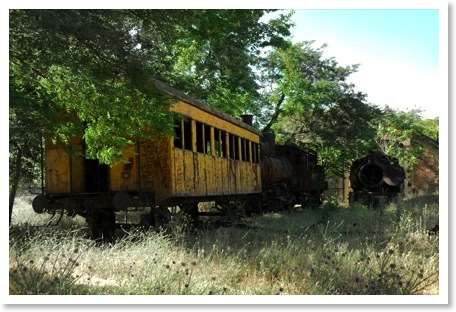
Rayak 2009
[16]
A considerable of Lebanon's income is provided by tourism, but still we lack museums specially those that preserve and reveal the country's modern history. By transforming the train stations, and train factories into one big museum, all the history and beauty of the location can attract thousands of tourists from all over the globe. It could become the biggest train museum in the region. Rayak railway played an important role in the country's history, just like time played a big role on the railways beauty. What's left of the 110 years old railway reminisce its glorious past. In an area which is approximately 170,000 m2 stand hundreds of metal sculptures taking the forms of trains, thousands of tools and equipment which are scattered all over the place, and big old building surrounded with rails. Lots of trees have concurred the area some of which are more than ten meters tall. Also strange animals have taken refuge in this station like foxes and owls. Some of the trains in Rayak lived more than a century. They are trains that survived the world war one and two. They carried the stories of soldiers with their battles, and those of civilians with their journeys and their love stories. There are more than thirty locomotives in the Rayak factory, and approximately two hundred wagons.
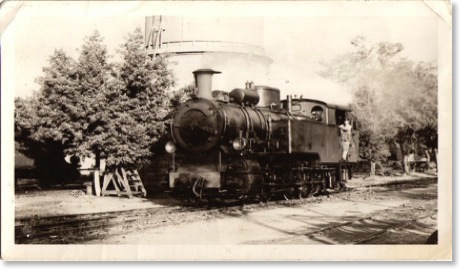
(SLM 1906) at Rayak railway station [12]
The following chart contains a list of some of the trains found in Rayak
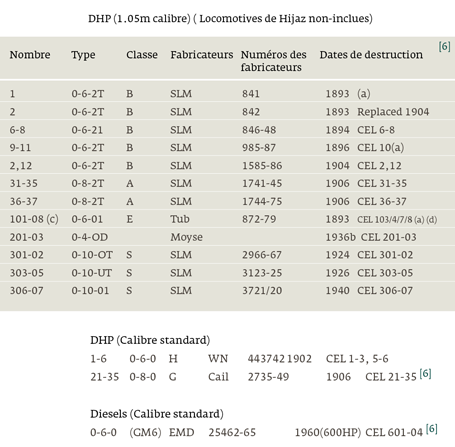
All over the railway we can find hundreds of different kinds of tools that were used at that time. These tools are mostly made of iron and wood. They were used by the factory workers for the maintenance of the rails and the locomotives. Nowadays after the creation of new mechanical instruments these tools can be considered antiques and collection items especially since they haven't been used for more than three decades. The buildings located in the railway add a lot of charm to the location. They were designed by French architects who built them in the nineteen-eighties. Scattered all over the site, these buildings served as hotels factories and station. Most of them are still standing and in good condition. Trees and plants have grown all over the site. Some have even grown in unexpected location, on the buildings, inside the locomotives, and underneath wagons. This has transformed the railway into a natural park, especially with the strange birds and animals inhabiting it. The basic elements are found for the elaboration of the project. What is left is the restoration of the location, in order to provide a secure and clean setting for its visitors. This would attract tourists from all over the globe.
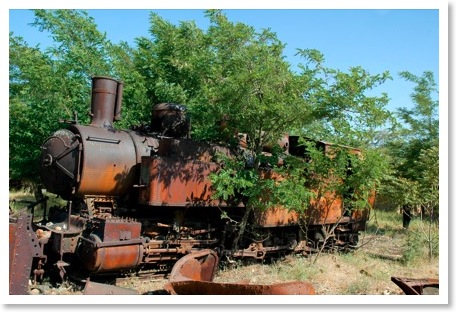
Rayak 2009 [16]
Transform the train factory and station into a museum, a process consisting of various steps. First of all the construction of a wall-fence is essential in order to preserve the train tools and equipments that are scattered all over the location. This wall could also help in the control of the visitors and their security. It is preferable to use a brick wall rather than a metal fence for privacy of the location. In the factory we need a wall fence of approximately 2120 meters long, with two big train gates and three visitor gates. As for the Railway station we need 1720meter long, with two big train gates and two visitor gates. Because the factory and the station are more then one kilometer away from each other, an old train should be restored to move tourists from the station to the factory and vise versa. Other than the thirty two trains found in Rayak, there are many other old trains found in the stations all around Lebanon. They can be brought to the Rayak station in order to preserve them. These could enrich the train collection making a museum of approximately eighty trains. The Lebanese railway also managed the tramway of Beirut established in the year 1895 [6]. By bringing the remaining tramway locomotives we would be enriching the museum's collection to consist of 100 or more locomotives.
Lebanese Tramway

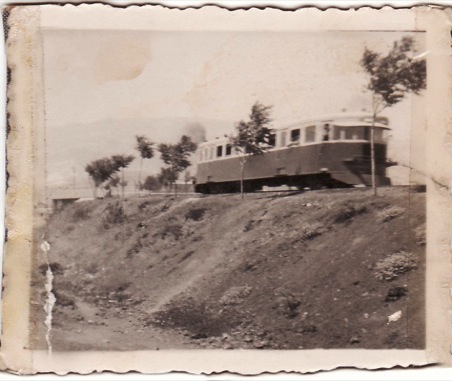
Beirut Tramway [13]
Different teams should be assigned to take care of the museum. A principal should be assigned to lead the teams. There should be a team of train engineers, and architects, to renovate the location in order to reflect the way it used to look in the past. A team of landscape designers should be founded to add life and flora to the location. There should be a team of mechanics, electricians, and gardeners to take care of the daily logistics. There should be a team to take care of the touristic events, musical concerts, fashion shows, and many other events can be organized every year.A photography contest of the railways old pictures should be organized, this could help the museum to collect a photo archive which could one day help in transforming one of the empty buildings into a photography museum. During the civil war railways archives that were left in the offices got burned. Due to the situation, many of the railway workers hid some of the documents in their homes. A lot of the documents are more than one hundred years old.Between the documents we can find old maps, train manuals, tickets, names of employees with their signatures, and we can even find letters which where sent and received by the railway workers. This could help us understand the history of the railway and provide evident history of the railway. Some of the maps and papers could be framed and exposed to the tourist visiting the station.
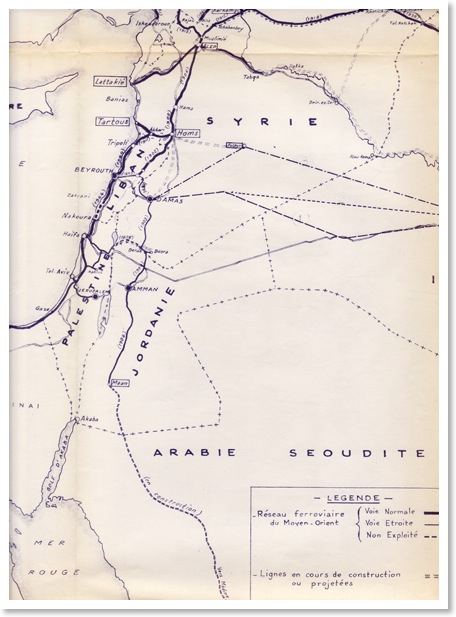
Train map of MEA [10]
Schools and universities could also benefit from this museum cultural aspects. Field trips could be made for students from all over Lebanon. This will introduce them to their countries modern history. A history they could relate to and become easily involved. The restoration of the "The Buffet Hotel" should be done. This would encourage tourists and provide them with accommodations. Some of the other buildings could serve as restaurants too.
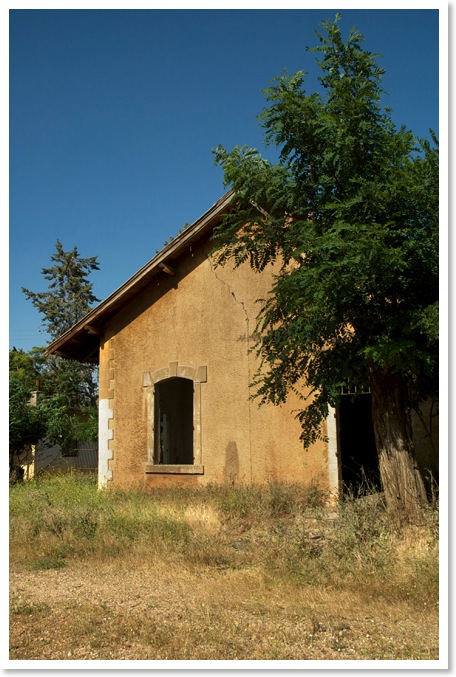
Rayak 2009 [16]
Trains are built by men, but cites are built by trains. Cities like Rayak were put on the map due mostly to the railway activity at the heart of the town. As many former workers have testified, the railway was far more than a source of income or mode of transport. To thousands of workers and many more passengers and admirers the railway signified a way of life, full of passion and pride. The elderly citizens of Rayak still reminisce about the days when their massive station and factory were still in service. Those who once worked in this factory boast that in those days they possessed the skills and facilities to renovate and rebuild a rusty old train in one year, yielding a gleaming state of the art train engine for their European costumers. Parts for these train engines were manufactured there in Rayak and locomotives were built from the ground up. The small City of Rayak came to enjoy great stature. It was a vibrant and dynamic town, beating to the incessant rhythm of the countless trains that passed through its station and factories. With the trains came development. Apart from its famous night life, Rayak boasted one of the first movie theaters in the Middle East as well as great schools. Moreover the train factory itself came to serve as a technical school. Students could visit this school and acquire certificates in varying fields such as iron work, plumbing, mechanics, and carpentry. 33 years have passed since the end of the Lebanese Railway's golden days. Today, those golden days have turned into a painful color of rust and decay. With highways overcrowding and road accidents multiplying continuously, more than ever, Lebanon is desperately in need of its railway to ease these conditions. What does the future hold for these railways? There Will be nothing to talk about as long as there is no will to be a part of a bright past that should live on to become an even brighter future, tangible for the coming generations. Preserving past in a museum could one day open the path into a bright future. This project could bring back life to the city of Rayak, offering plenty of job opportunities. Giving hope to its people, and preserving a relic that played a major role in the country's history, in a city which once inspired the whole region.
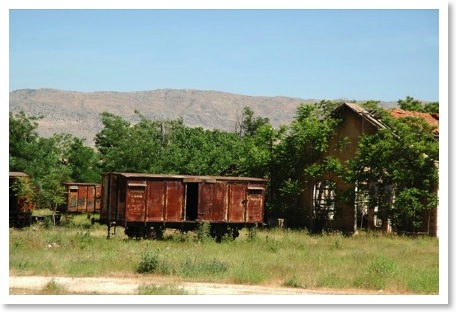
Rayak 2009 [16]
[1] CEL - Chemin de Fer de l'Etat Libanais Lebanese State Railways Retrieved by (almashcriq) 15 Apr, 2008 http://almashriq.hiof.no/lebanon/300/380/385/railways/ background/index.html
[2] Map of (Chemins de fer De L`etat Libanais "Carte du Reseau Ferroviair du moyen orient")
[3] Ya Tren Documentary Interview Anis Saghbini Interview Khayrallah Khayrallah Interview George Kassis
[4] Map of (Chemin de fer Damas Hama Et Prolongment "Plan d`esemble de la gare de Rayak Station" N#274/c Mis a jour le 18/1/1960)
[5] Map of (Chemin de fer Damas Hama Et Prolongment "Plan d`esemble de la gare de Rayak Ateliers" E. Jabra 20/9/1960)
[6] Hugh Hughes (Middle East Railways) The Continental Railway Circle,http://almashriq.hiof.no/lebanon/300/380/385/railways/ resources/middleeast/20080510 / Last modified: Fri Jun 20 17:02:27 2008 / BL
[7] Michel and Toufic Ficany Photography.
[8] Anis Al Sagbini Photo Archive.
[9] "Gare de Rayak, 1900 Épreuve au gelatino - Bromure d'argent H:11; L: 16 Collection Felici, Rome x1-85" Retrived from Michel's Fawi L'ATELIER DE BEYROUT; Editions de L'Escalier.
[10] Private Archive E.B.M
[11] Cover picture Stavros Estematiatis Photo Archive
[12] Yousef Al Mor Photo Archive
[13] Toufic Hallit Photo Archive
[14] Elias Al Mimassi Photo Archive
[15] ELias Moubarak Photo Archive
[16] William Choukeir Photo Archive
[17] David Habchy Photo Archive
[18] iloubnan.info retreived in 10 Aug, 2009 http://www.iloubnan.info/fr/reportage/id/279/article/807